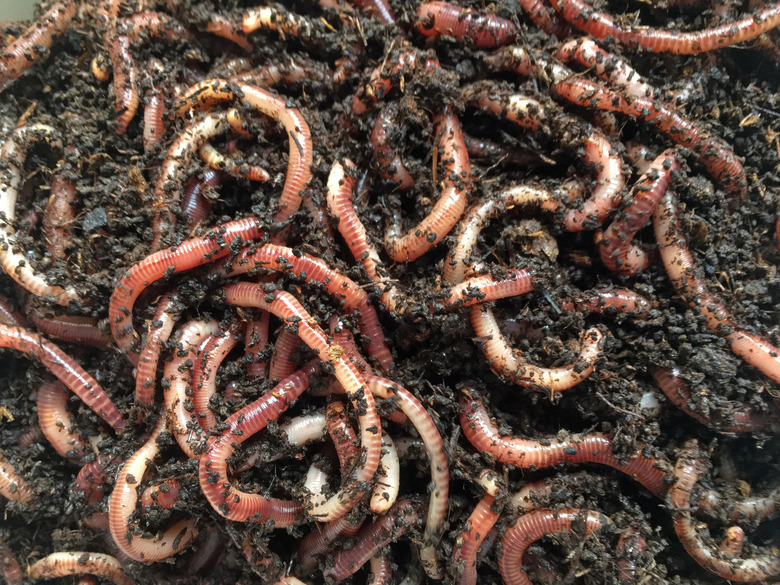Facts About Nightcrawlers
Though nightcrawler worms can burrow down to a depth of 6.5 feet, they generally stay close to the surface. This increases the chance of running across one when gardening, playing in the dirt or landscaping. These worms receive their name because you can usually find them feeding above ground at night, but they're really just your common earthworm.
Physical Description
Physical Description
When you examine a nightcrawler worm up close, note their red-gray color and ring-shaped segments called annuli. Tiny bristles called setae cover each annuli. Nightcrawlers use their setae to slither and move as well as burrow into the ground. If you dissect one of these worms, you will discover that it does not possess a backbone, making it an invertebrate. Nightcrawlers can grow to be a whopping 14 inches long and can weight up to 0.39 oz. In the wild, the average night crawler can live to be six years old.
Food
Food
The first segment of a nightcrawler worm's body contains the mouth. As they burrow, they feed on soil. The dirt contains decomposing leaves and roots, and the worm's body extracts these nutrients from the soil. The fact that they eat plants for energy makes them herbivores. They can eat up to a third of their body weight in a single day. These worms also function as food for many creatures such as birds, rats and toads. Commercial and recreational fishermen often dig for nightcrawlers in order to use them for bait to catch fish.
Environmental Impact
Environmental Impact
While some areas consider nightcrawler worms to be an agricultural pest, they provide a valuable service to gardeners, farmers and the earth. Their tunnels introduce air to the ground and allow the soil to breathe. Aerating gets oxygen to roots to aid growth, helps fertilizer and water reach roots and loosens up compacted soil which helps roots grow. Plus, their waste transports important nutrients and minerals from the underground to the surface.
Types of Nightcrawler Worms
Types of Nightcrawler Worms
You can divide nightcrawlers into two types: European and Canadian. European nightcrawlers usually measure around 3 inches in length. People use these worms for fishing and composting. People pour their household food garbage into a compost bin where worms eat it and produce compost through their waste. They then use the compost to fertilizer their lawns and gardens. Others feed these worms to their pet lizards and turtles.
Canadian nightcrawlers grow larger than European nightcrawlers, up to 14 inches. This makes them great for fishing because they can easily be secured on a fishhook. The worms also remain alive for approximately five minutes while under water. This means their movements can attract fish. They make good bait for freshwater fish such as large-mouth bass, trout and catfish. However, Canadian nightcrawlers don't like warm temperatures and will die in temperatures above 65 degrees Fahrenheit.
Cite This Article
MLA
Marquette, Kristen. "Facts About Nightcrawlers" sciencing.com, https://www.sciencing.com/nightcrawlers-8032152/. 22 November 2019.
APA
Marquette, Kristen. (2019, November 22). Facts About Nightcrawlers. sciencing.com. Retrieved from https://www.sciencing.com/nightcrawlers-8032152/
Chicago
Marquette, Kristen. Facts About Nightcrawlers last modified March 24, 2022. https://www.sciencing.com/nightcrawlers-8032152/
